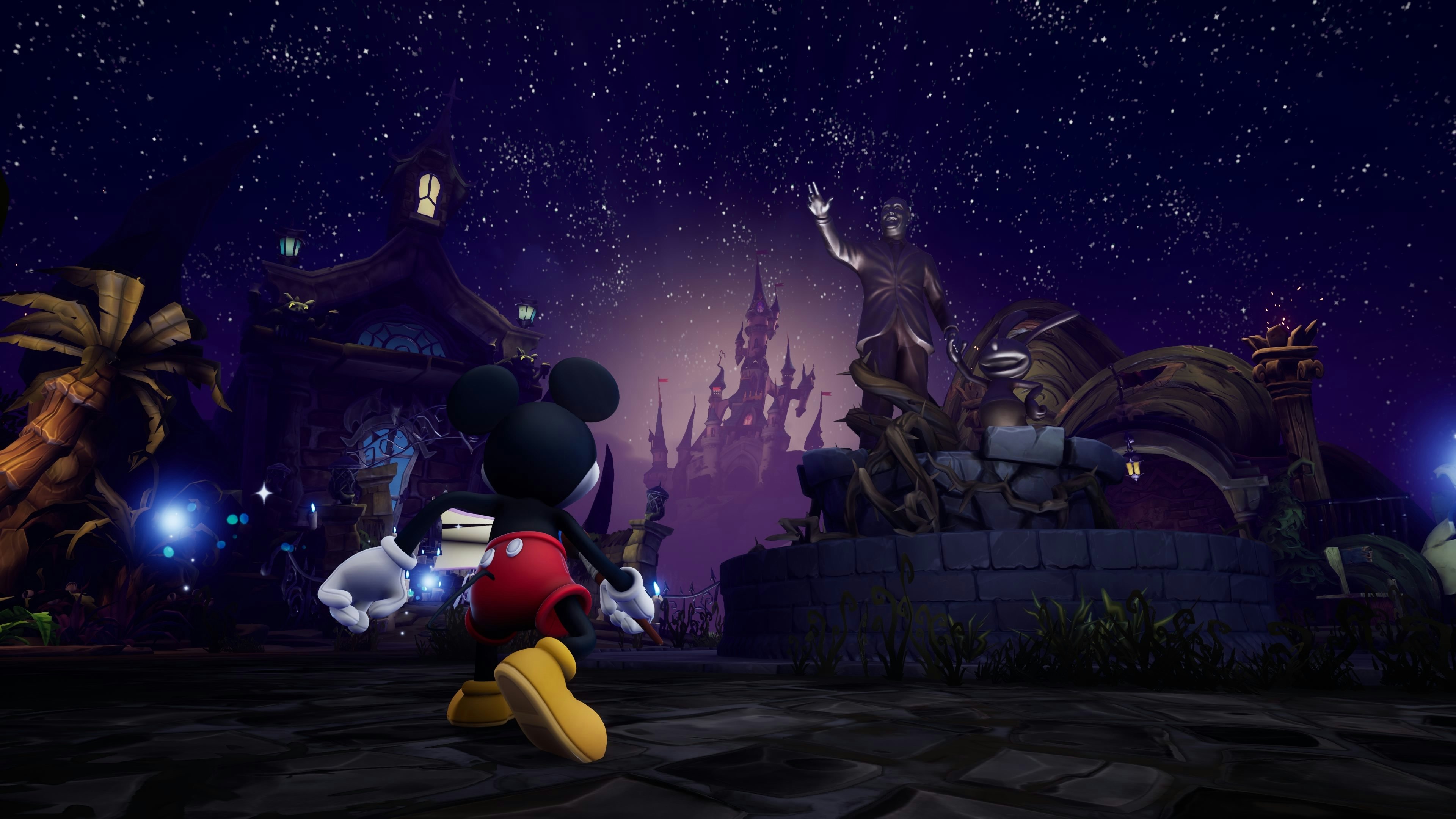
After spin-attacking my way through enemies in the game's introductory level, I enter Epic Mickey’s first hub world: Mean Street.
The moody soundtrack swells as I behold a bustling toon-town filled with pre-golden era Disney characters. In the distance sits a creepy and decrepit version of the iconic castle that donned every VHS tape I watched relentlessly growing up. I wander around this hellscape in pure appreciation of how daring, dark, and welcomingly subversive this all feels, especially for a game that hit store shelves long before Disney bought Star Wars and made The Avengers a household name.
In many ways, Epic Mickey is the gaming adventure that the 100-year-old mascot has always deserved. Mickey’s had his fair share of gaming appearances. But except for that one notable series from Square Enix, most of them have been forgettable. In Epic Mickey, Walt Disney’s most iconic creation gets the spotlight he deserves, and the budget and ambition to back it up.

Beyond the spectacle of its presentation, Epic Mickey: Rebrushed unfortunately doesn’t have the depth to back it up. This remastered version of the Wii original better realizes developer Junction Point’s compelling vision 14 years later. However, without the novelty of hit-or-miss motion controls, its overly simple and repetitive mission design and its half-baked morality system make Epic Mickey: Rebrushed fall short of being a classic revival straight from the Disney Vault.
Tale As Old As Time
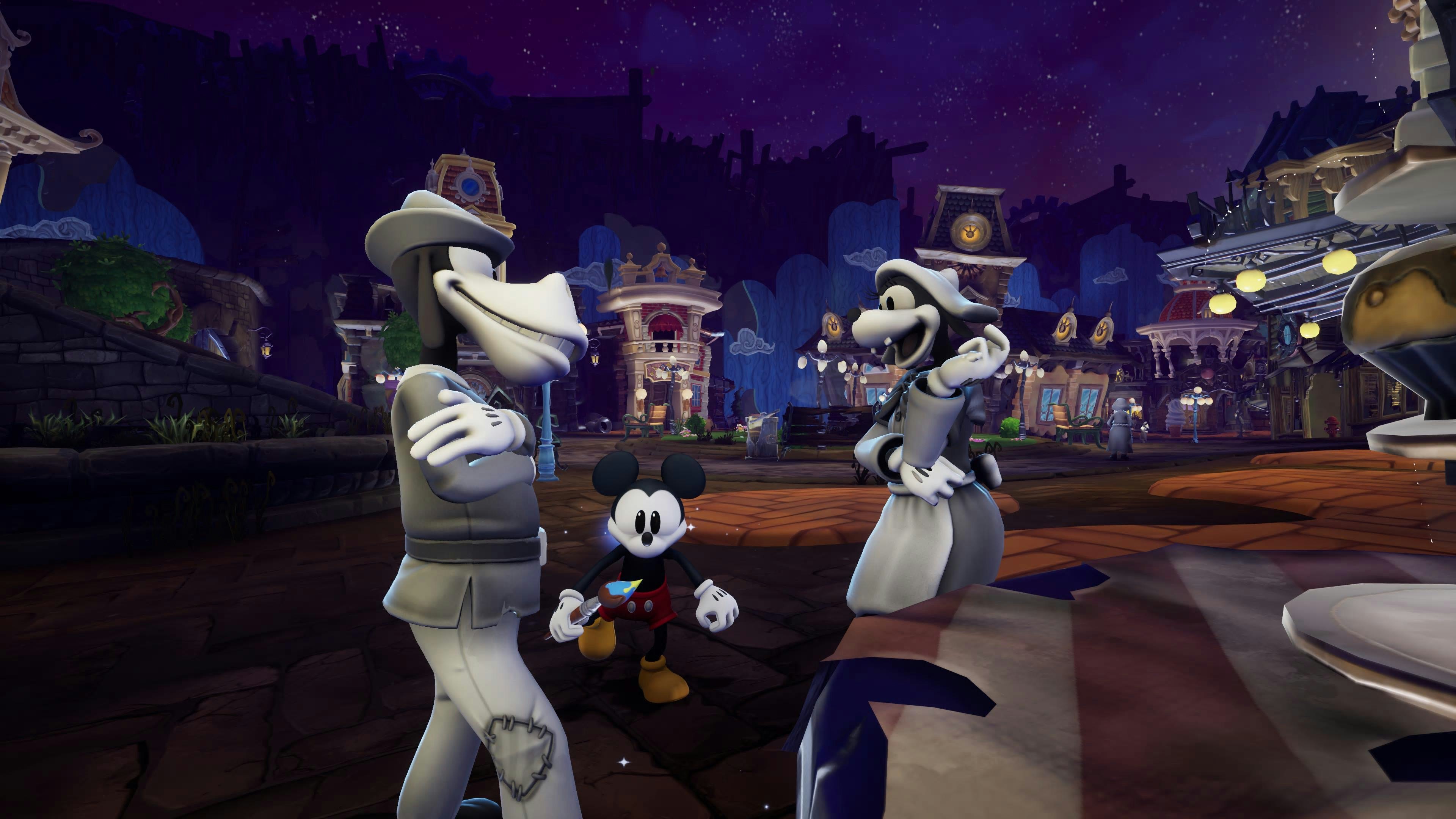
Epic Mickey is a platformer set in a world where the cartoon characters are movie stars. Capturing the height of Mickey’s rise to fame, this version of the character is one who made waves starring in theatrical cartoon shorts.
Released in 2010, Epic Mickey was Disney’s attempt to reintroduce the titular mouse as a gaming protagonist that could stand alongside Sonic and Mario. Publisher Disney Interactive hired Warren Spector, the game designer behind the original Deus Ex series, who also worked on groundbreaking works like System Shock and Thief: The Dark Project. Epic Mickey would have some of the immersive sim DNA from some of those titles.
As a Wii exclusive, however, the ambition was technically restrained. Its goth-steampunk look was a standout hampered by the Wii’s lack of high-definition resolution. The Wii’s lack of a second analog stick made camera control a frustrating mess.

This Rebrushed edition of the game fixes nearly all of those issues. It plays better than it did on the Wii. And while it's not the most graphically stunning game in terms of fidelity, the art direction shines as it always should have. The way it twists and contorts Disney iconography into something alien and just a little off-putting feels crisp in 4K. Epic Mickey is always kid-friendly. But it’s just creepy enough to be cool without crossing into cringey, edgelord territory.
The story of Epic Mickey thankfully meets the high bar set by its visuals. After Mickey’s irresponsibility ruins the cartoon world that existed before he hits the big time, he’s forced to confront this grave mistake after finding huge success at their expense.
As weird as it may be to say this, Epic Mickey is a fun and surprisingly heartfelt tale of redemption. It’s meta-commentary on Walt Disney’s forgotten and iconic creations, with effective meditations on the fickleness of fame, and the power of forgiveness.
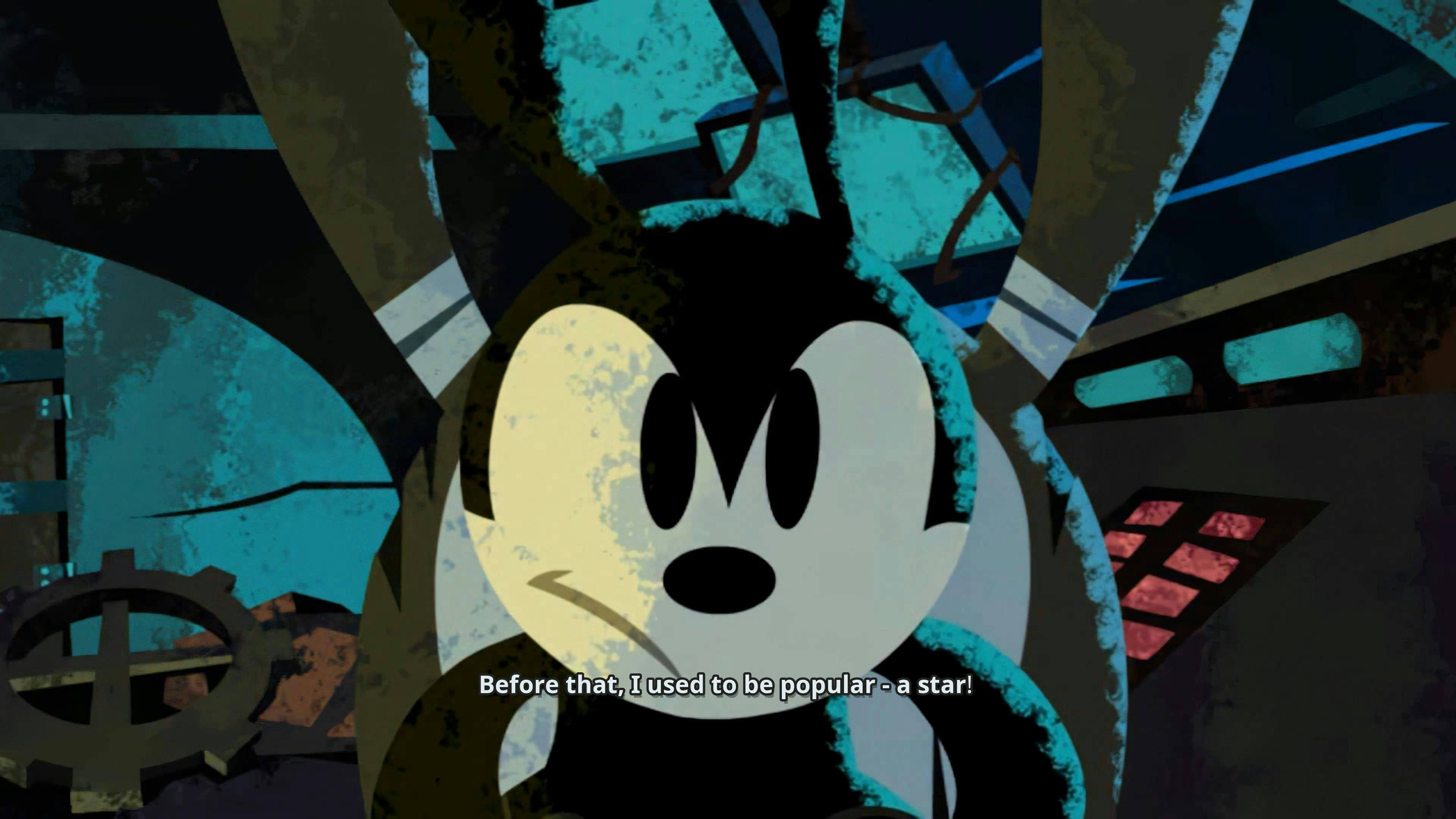
The game’s antagonist, Oswald the Lucky Rabbit, is actually Walt Disney’s first breakout character in real life. Losing the rights to make Oswald cartoons is why he created Mickey Mouse. Mickey would overshadow Oswald’s popularity in a few years, eventually becoming the face of one of the world’s most recognizable brands.
In the game, Oswald is a complicated character who feels abandoned by his creator and the world. He sees Mickey as the guy who stole the career he worked hard for. And his resentment has made him the harsh overseer of The Wasteland, where other forgotten cartoon characters live. Epic Mickey’s story delivers great fan service without losing the plot, which is largely the main reason to jump into this title.
The Bare Necessities
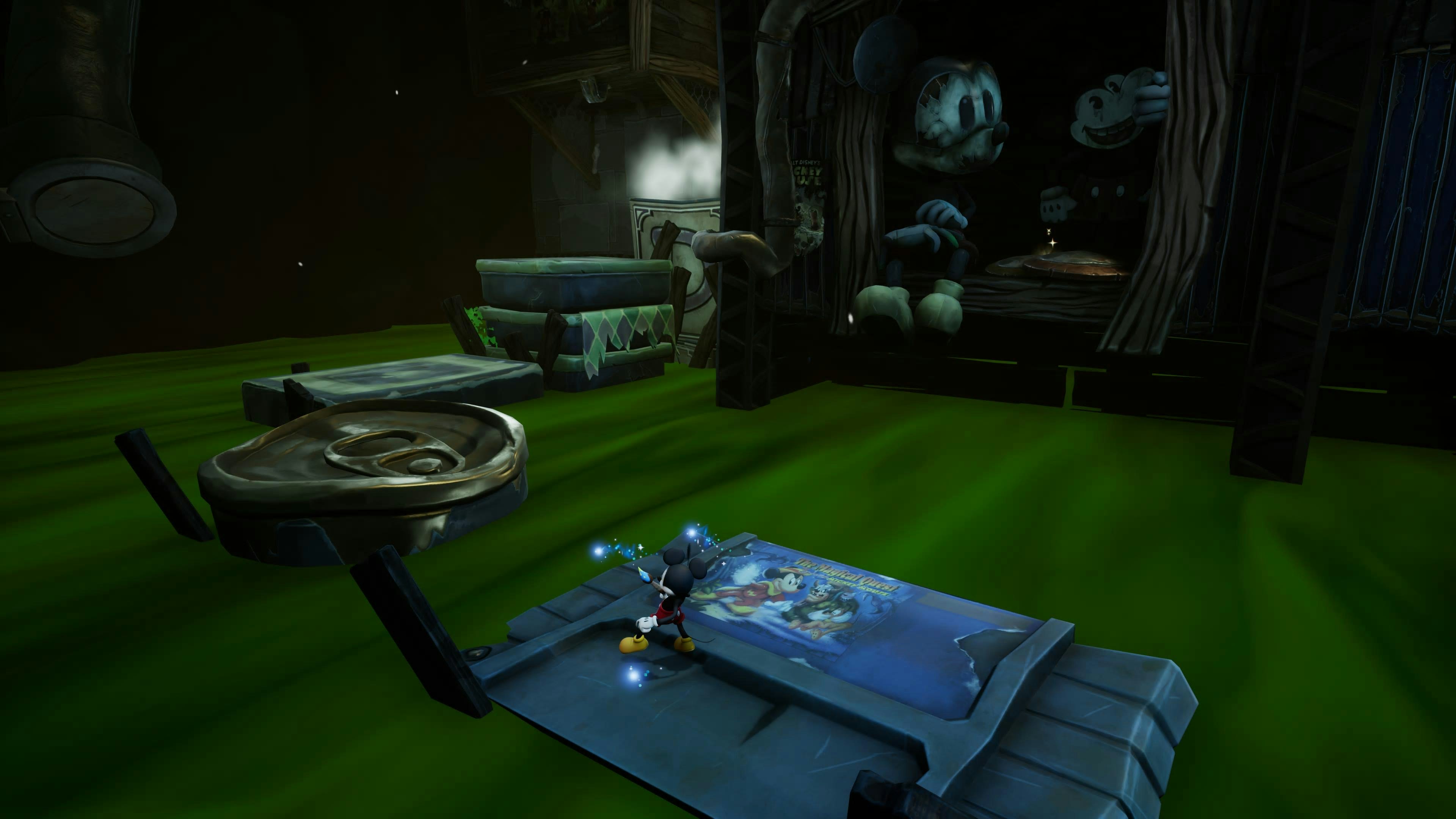
When it comes to gameplay, however, Epic Mickey stumbles. There’s nothing wrong with its three pillars of traditional 3D platforming, 2D side-scrolling, and open-ended adventure levels, they also don’t do anything particularly special or interesting.
The 3D platforming works well enough. Mickey can double jump over gaps, spin attack enemies, or use a magical paintbrush to interact with the environment. The paintbrush is the crux of how the game tries to keep things fresh, letting players use thinner to erase parts of the environment or paint to create objects and fill in missing gaps. It’s a great conceit that rarely feels like it's being used to its fullest creative potential.
Spots where the paintbrush can be used are clearly signposted, save for certain secret areas. Combat using the paintbrush also feels more tedious than engaging. Paint can turn enemies into allies, but their help is never as effective as defeating them yourself. There are some cool moments when you can use thinner to evaporate the platforms underneath enemies so they fall to their demise. But these moments are uncommon.
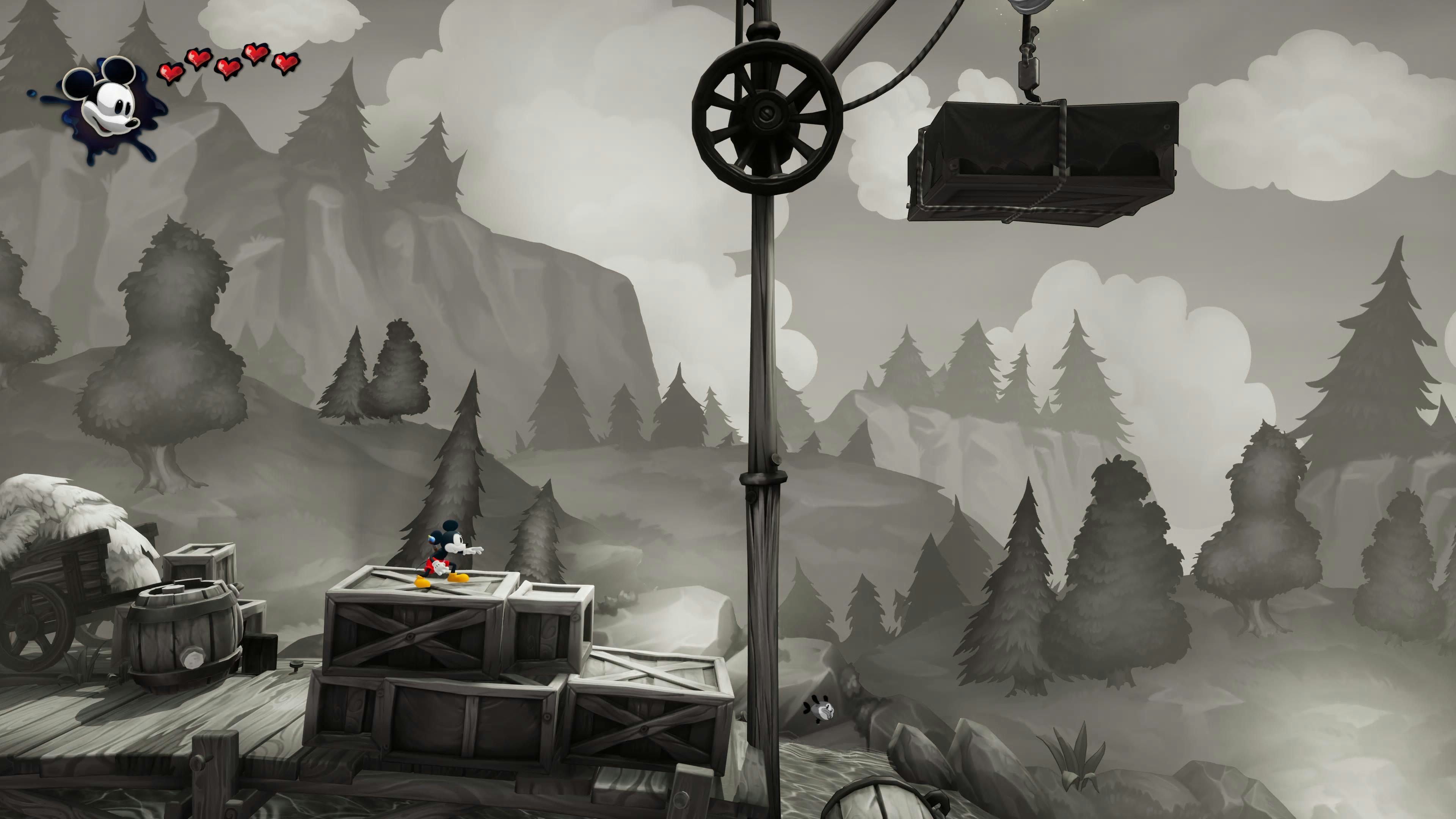
The 2D levels, each based on a Disney short or cartoon, are fun to look at but too short to provide the variety they should. These are woefully simple, by-the-numbers platforming sections that put up little challenge. I never had an issue grabbing every optional and hidden collectible before hitting the end.
The final pillar is the various open-ended areas where there are shops, buildings to enter, and NPCs to speak to. NPCs give quests for optional and mandatory rewards. Again, Epic Mickey feels like it’s on the cusp of something great here, but unfortunately, these bits are once again too simple and repetitive. Most of these missions are fetch quests and can be beaten in a couple of minutes. And the ones that should incentivize exploring aren’t fulfilling as their objectives appear along the game’s golden path.
Despite the straightforward mechanics, Epic Mickey: Rebrushed never trusts the player to figure things out. It shows you exactly where to go and what to do no matter how simple the objective. In the early game, the constant interruptions are especially frustrating as tutorial dialogue will pull you out of the exploration and experimenting for yourself.
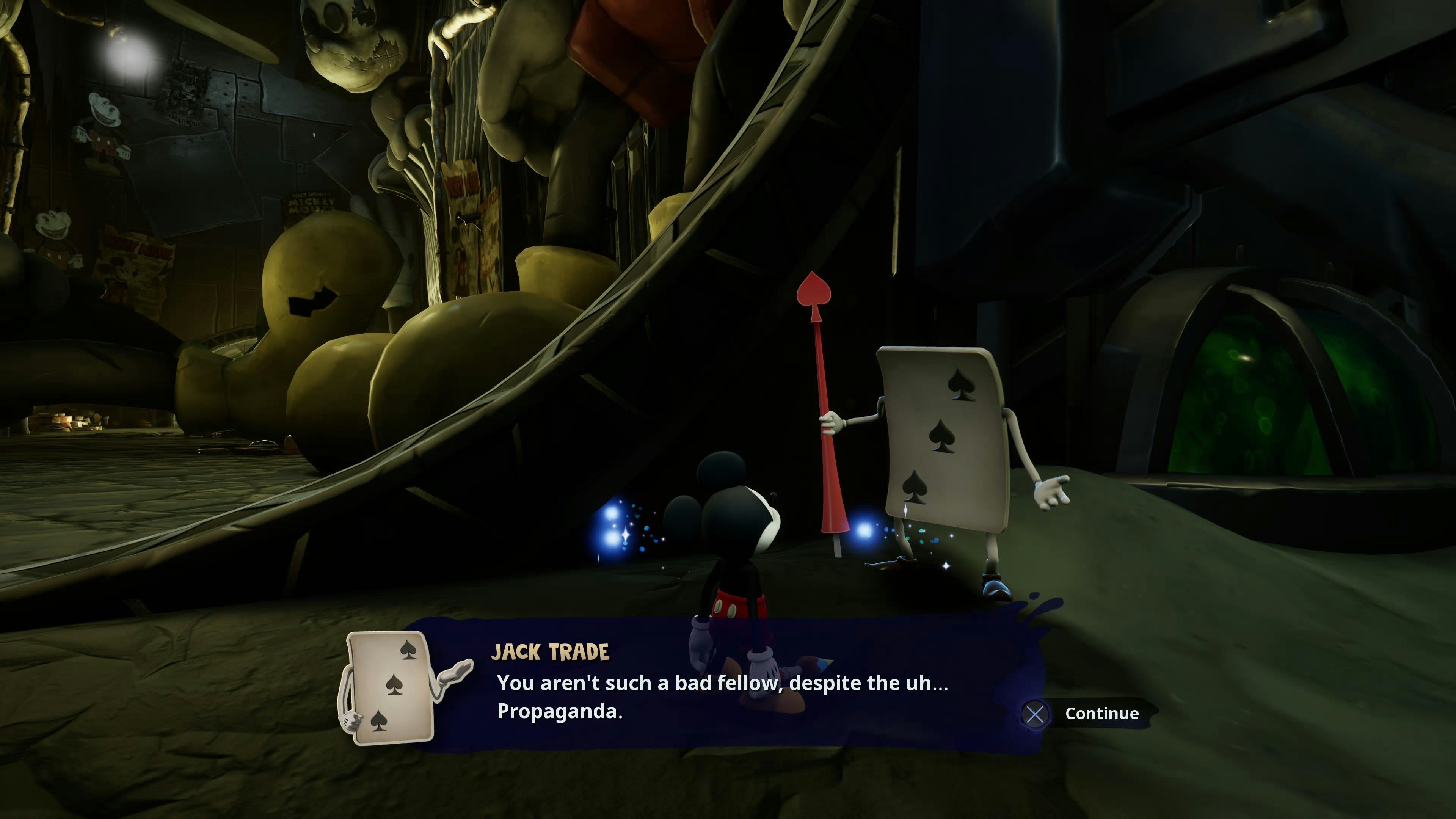
What ties everything together is Epic Mickey’s morality system. The game will occasionally present the players with the choice of being the squeaky-clean Mickey of the modern age, or a mischievous vagabond like a Bugs Bunny. Want to permanently eliminate a boss with paint thinner, or give him a second chance? Do you rat out who stole a quest-giver’s precious heirloom, or help the thief solve the town’s electricity problem?
It’s cool that choice exists in Epic Mickey. There are two different endings so these choices eventually stack up. But my playthrough still felt a little hollow. It's hard to recognize the impact of these choices at the moment, a seemingly missed opportunity as the open-world sections could have reflected Mickey’s choices.
Almost There
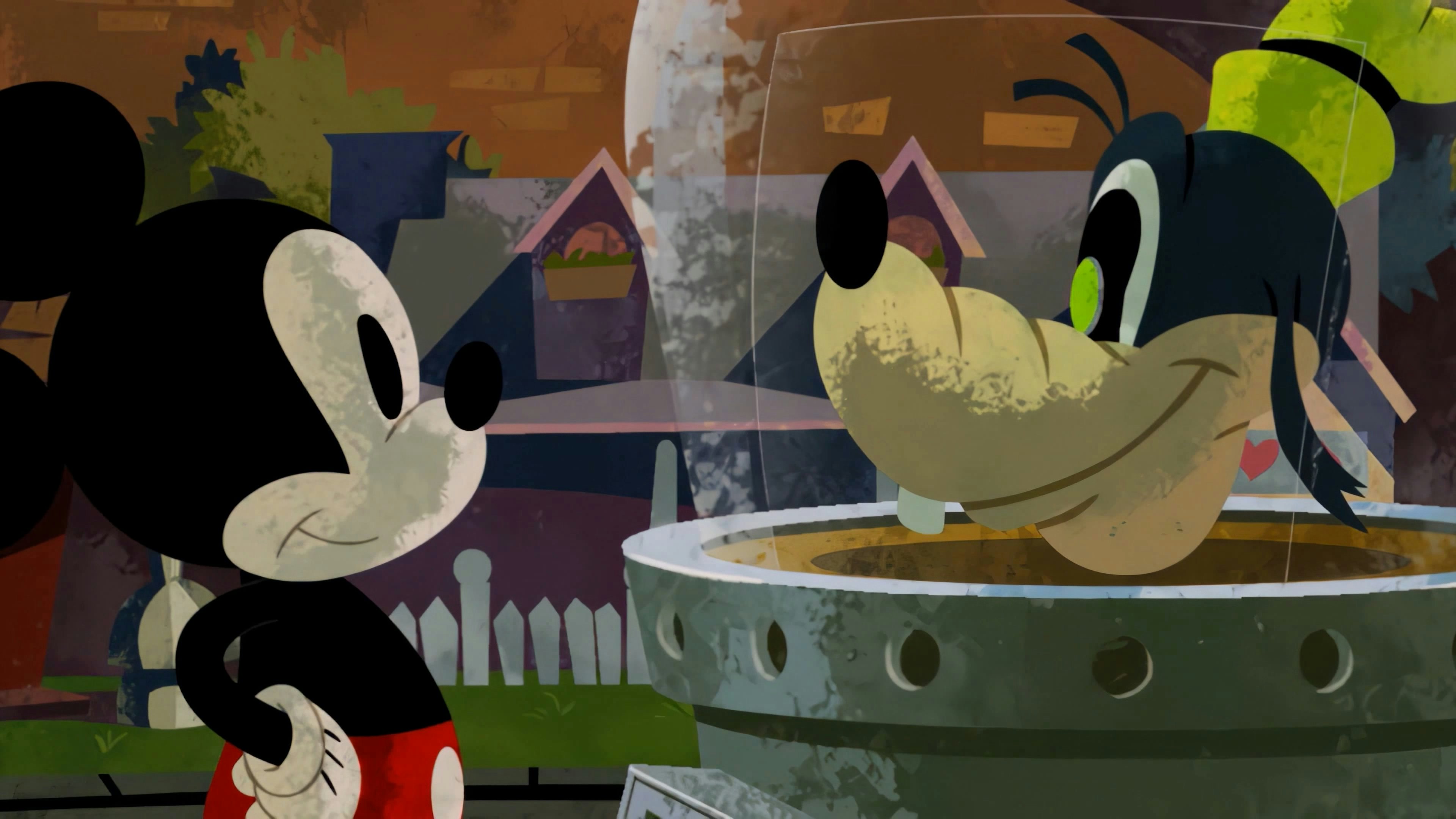
Epic Mickey: Rebrushed is a game full of artistic ambition. The attention to detail and cool Easter eggs are a joy to experience, especially with the new coat of paint developer Purple Lamp has applied in this re-release.
Unfortunately, removing the faults of the original game leaves behind a very simple platformer. Epic Mickey has so many cool ideas that it never elaborates on despite its initial promises. The hand-hold-y nature of the original Wii game is alive and well and feels incredibly out of place at a time when more people than ever are familiar with not just video games, but the genre of platforming games.
Epic Mickey: Rebrushed is a great idea held back by the era of games in which it was created. Younger players and fanatics of classic Disney may have a blast seeing this creative spin on the source material. But there’s little else that it does to stand out among the genre’s best.
7/10
Epic Mickey: Rebrushed launches Sept. 24 on PlayStation 4, PlayStation 5, Xbox One, Xbox Series X|S, Nintendo Switch, and PC. Inverse tested the PS5 version.
INVERSE VIDEO GAME REVIEW ETHOS: Every Inverse video game review answers two questions: Is this game worth your time? Are you getting what you pay for? We have no tolerance for endless fetch quests, clunky mechanics, or bugs that dilute the experience. We care deeply about a game’s design, world-building, character arcs, and storytelling come together. Inverse will never punch down, but we aren’t afraid to punch up. We love magic and science-fiction in equal measure, and as much as we love experiencing rich stories and worlds through games, we won’t ignore the real-world context in which those games are made.







